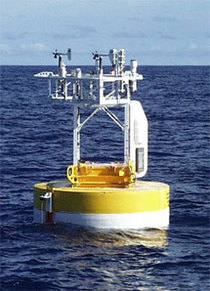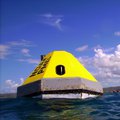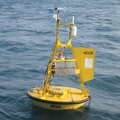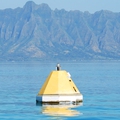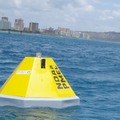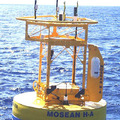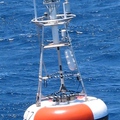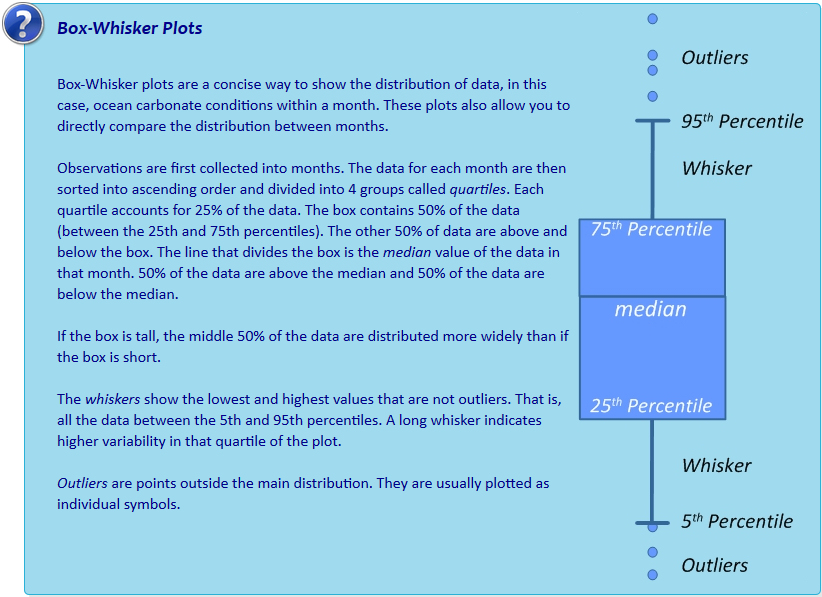WHOTS
WHOI Hawaii Ocean Time-series Station (WHOTS) Mooring (22.7°N, 157.9°W)
In July 2007, the MAPCO2TM system was moved from the MOSEAN H-A mooring to the WHOI Hawaii Ocean Timeseries Station (WHOTS) Mooring near the Hawaii Ocean Time-series (HOT) site. The mooring was located ~100 km north of Oahu, Hawaii. Having a mooring co-located with the shipboard HOT time-series site provides the opportunity to examine high frequency variability in-between times when the ship visits the site (approximately one week per month) and the shipboard data provide a wide variety of information that can be used to interpret the observed variations at the site that would not be possible from the mooring alone. This work is supported by NOAA's Ocean Climate Observation Program and Ocean Acidification Program.
On July 7, 2011, a surface seawater pH sensor was added to the WHOTS Mooring mooring. By measuring pH in addition to pCO2, we are able to more accurately and precisely study the changes associated with ocean acidification. All seawater pH observations are shown in the second figure below.
Please visit the WHOTS Website for more information.
Finalized Data: National Centers for Environmental Information NCEI.
Plots of surface water and atmospheric CO2 and surface water pH:
Monthly climatology of surface seawater aragonite saturation state (Ω) and pH:
Interactive box plots below are observations binned by month as described in Sutton et al., 2016. Pie charts represent % of observations within each month that fall below the adjustable line. This adjustable line is meant to provide a tool for assessing potential biological thresholds. For example, setting the line to Ωaragonite of ~2.0 would assess monthly exposure of Pacific oyster larvae to sub-lethal chronic effects in regions where these larvae occur naturally or in hatcheries (see studies here and here).

